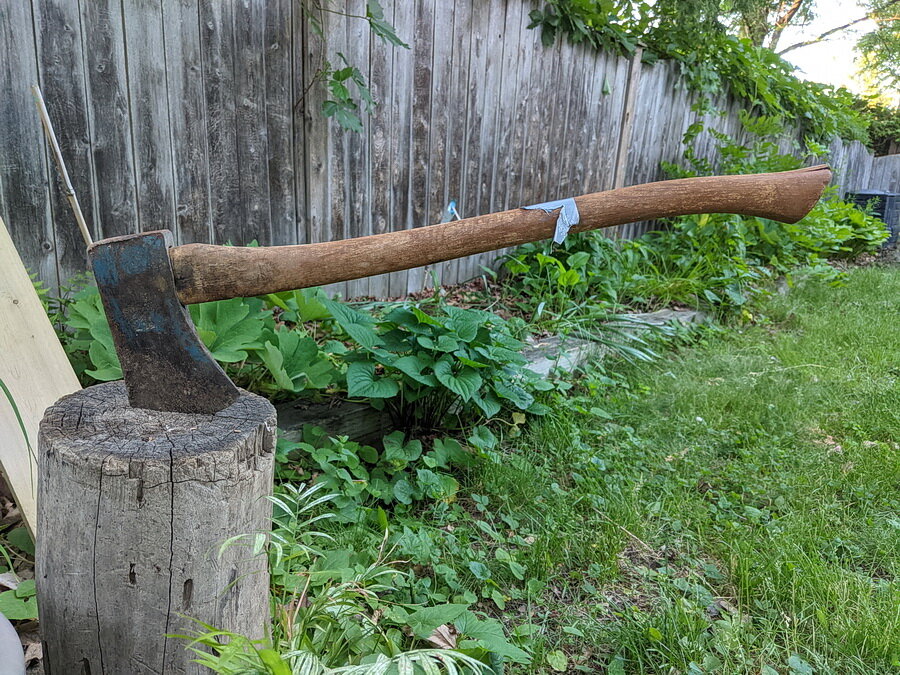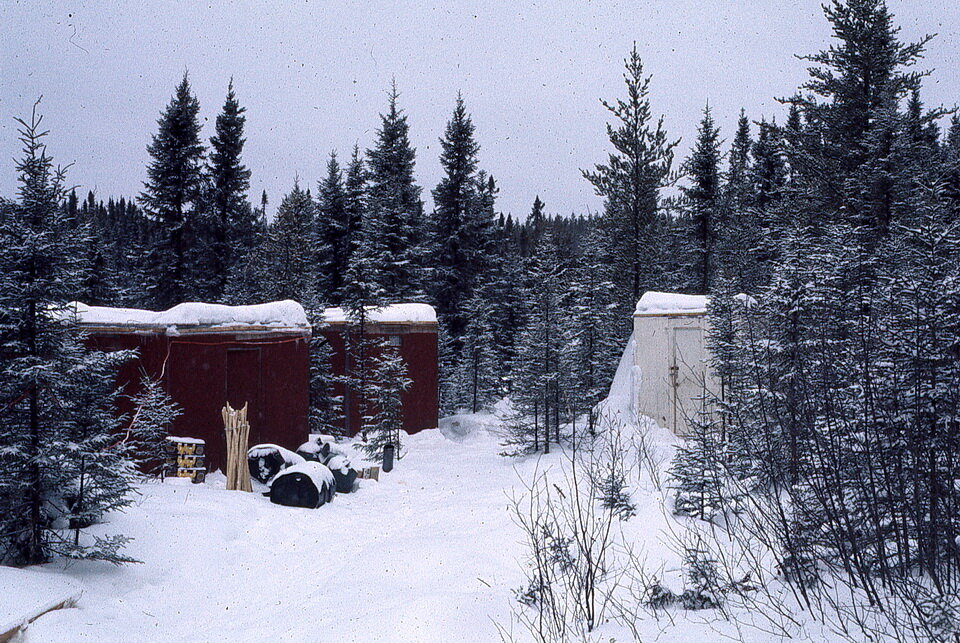Far North Friday: #2 Axe
Warning - imaginary images may be disturbing.
If you have an axe (Photo 1), likely you have a favourite, based on style, weight, handle type, or the ability of its head to hold its edge.
Photo 1: One of my axes. It is not an expensive axe. It is just an axe that has been with me for many years. It needs a little work to clean up, but it is not adorned with red, florescent #2 on its handle, so it is safe to use. Image by Andy Fyon, June 17, 2021.
What you use the axe for will determine the type of axe you buy. But, have you ever used a #2 axe?
A good axe can be your best friend in the bush. You look after it. You soak the head if it gets loose. You lovingly sharpen the edge to keep it sharp. You can sacrilegiously use it as a nail hammer or a rock hammer. But, you don’t use a high end axe to chop out roots beneath the tent because the ground contains rocks. Rocks and axes are not friends.
For several winter bush projects, we lived in pre-fabricated boxes about 30 feet long and 15 feet wide (Photo 2). They were heated by a fuel oil stove. They were more comfortable than a tent when it was -40C. They had one downside. They did not have an indoor toilet. That was not a big issue, because we built an outdoor toilet, or used an existing outdoor toilet if one was available. To some, the outdoor toilet was primitive. It was made from local trees, a tarpaulin, and some plywood as a seat. It was not elegant, but it was functional. In winter, there was no ground hole to collect the gifts. In winter, the gifts - bluntly - accumulated on the frozen ground. There is an art and a science to using such a toilet in winter. I will spare you the details, but suffice to say, on the dark, windy, cold days of January, this was not a facility where you sat and reflected on the meaning of life!
Photo 2: The red “boxes” were pre-fabricated structures that we used as our winter bush camp. They were about 30 feet long and 15 feet wide. They were heated by a fuel oil stove. They were more comfortable than a tent when it was -40C. They had one downside. They did not have an indoor toilet. This camp was located in the Sabin Lake area, south of Savant Lake, Ontario, in 1977. The white building on the right contained a generator. Image by Andy Fyon, 1977.
I recall asking one day why an axe sat strategically against the toilet wall during the winter. Perhaps to cut wood to warm up while waiting your turn? Or to defend against rampaging winter animals? No, I was told that was a #2 axe and it had an important function.
Let me explain. If you have piled sand, you learned that sand, like other granular materials, forms a vertical cone - flat on the bottom and “pointy” on the top. The sides of that cone demonstrate a physical property named critical angle of repose. That is the steepest slope, formed by piled material, without slumping. Wet sand has a slope of about 45 degrees to the horizontal. Clover seed has a slope of about 28 degrees. Generally, frozen material has a steeper slope compared to its unfrozen equivalent.
Now, what is the connection between angle of repose and #2 axe? Well, with continued use of the winter toilet, the deposited gifts” froze on impact to form an upward pointing cone - as if it was trying to escape. Eventually, an unpleasant, essential task had to be performed. It was necessary to periodically lop off the top of the cone to allow continued deposition. That decapitation ensured there was no syn-depositional contact. How is your imagination doing?
The function of the #2 axe was to decapitate the peak of the organic gift cone! The axe was labelled #2 to ensure it was used ONLY for this important, delicate, job...carried out by the co-op student, of course.
So, the next time you pick up someone’s favourite axe to carve a paddle or fall a tree, perhaps you might check twice to ensure it does not bear a #2 crudely adorned on the handle with red fluorescent paint. If it does, you can marvel at the essential function it once served.
June 18/21 (Facebook June 18/21)


